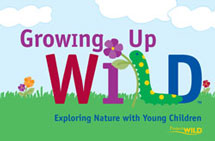Environmental Links
Organizations |
|
|
THE KENTUCKY ASSOCIATION FOR ENVIRONMENTAL EDUCATION (KAEE) is an organization of individuals who are interested in the promotion of environmental education. Members represent K–12 schools, school administrators, colleges, and universities. Additionally, they represent businesses, industries, and government on a local, state, and federal level. KAEE holds an annual conference, sponsors workshops, and publishes a newsletter. For more information, click here, or on their logo. |
|
|
THE NORTH AMERICAN ASSOCIATION FOR ENVIRONMENTAL EDUCATION (NAAEE) is a network of professionals, students, and volunteers working in the field of environmental education throughout North America and in over 55 countries around the world. NAAEE is made up of people who have thought seriously about how people become literate about environmental issues. In order to provide support for environmental education and educators, NAAEE offers a variety of programs and activities. These include NAAEE's Annual Conference, held at sites throughout North America, NAAEE publications, now published by them and disseminated by them, and EE-Link, where you can explore resources, programs and projects. For more information, click here, or on their logo. |
 |
|
THE NATIONAL ENVIRONMENTAL EDUCATION ADVANCEMENT PROJECT (NEEAP) conducts research and provides programs about and for EE leaders who are working toward environmental literacy. To access their online newsletter, EE Advocate, and Publications, click here, or on their logo. |
 |
Agencies |
|
|
THE KENTUCKY ENVIRONMENTAL EDUCATION COUNCIL (KEEC) is a state agency whose work is directed by a group of citizens appointed by the governor. The Council creates a plan to improve Environmental Education in Kentucky. It develops instructional materials that can be accessed free from their Web site. People and programs are available statewide in every county to help you as you teach students of all ages about the environment. For more information, click here, or on their logo. |
 |
|
THE ENVIRONMENTAL PROTECTION AGENCY was established to protect human health and the environment. Available educational resources include those for students Grades K–12, teachers (formal and nonformal education), grants, and technical documents. To access EPA Educational Resources, click here, or on their logo. |
 |
Classroom Activity Guides |
|
|
PROJECT WET (Water Education for Teachers) distributes classroom-ready teaching aids for educators and young people ages 5–18. The program facilitates and promotes awareness, appreciation, knowledge, and stewardship of water resources. For more information, click here, or on the their logo. |
 |
|
PROJECT FOOD, LAND AND PEOPLE (FLP) helps people better understand the interrelationships among agriculture, the environment, and people of the world. Available through a training workshop, FLP includes lessons for Grades preK–12. The lesson format includes subject areas addressed, skills used, objectives, and step-by-step procedures. To find out about the training workshops available, contact Rayetta Boone at (502) 564-4696. To learn more about the program, click here, or on their logo. |
 |
|
PROJECT LEARNING TREE (PLT) is an award-winning environmental education program designed for teachers and other educators, parents, and community leaders working with youth from Grades preK–12. The program uses trees and the forest as a "window" to the natural world ecology, and habitat. In other words, it helps students learn about the environment and their place in it. The lessons focus on the scientific process, critical and creative thinking, as well as direct and hands-on experience; they are interdisciplinary and student centered. PLT is available through a training workshop. To find out about the training workshops, contact Doug McLaren at (859) 257-2703. To learn more about the program, click here, or on their logo. |
 |
|
PROJECT WILD AND PROJECT WILD AQUATIC are K–12 curriculum and activity guides to help learners develop awareness, knowledge, skills, and commitment, resulting in making informed decisions concerning wildlife and the environment upon which all life depends. Project WILD focuses on habitats of nondomesticated animals. Project WILD Aquatic explores wild animals that depend on aquatic environments for survival. Both guides are available through training workshops. To find out about the workshops, contact Jay Webb at (502) 564-4224. To learn more about the guide, click here, or on their logo. |
 |
|
Project FLYING WILD was developed under the guidance of a large number of environmental education professionals and wildlife conservation organizations. While focusing on subjects involving migratory birds, and festivals as vehicles to learn about birds. Flying WILD activities and bird festivals provide a wonderful way to introduce students to the study of birds and related habitat issues. To find out more about the Flying Wild call April Haight at (606) 783-2455. To learn more about the guide, click here, or on their logo. |
 |
|
Growing Up WILD is an early childhood education program that builds on children’s sense of wonder
about nature and invites them to explore wildlife and the world around them. Through
a wide range of activities and experiences, Growing Up WILD provides an early foundation
for developing positive impressions about the natural world and lifelong social and
academic skills. |
 |
Some of the links on this page may require additional software to view.

